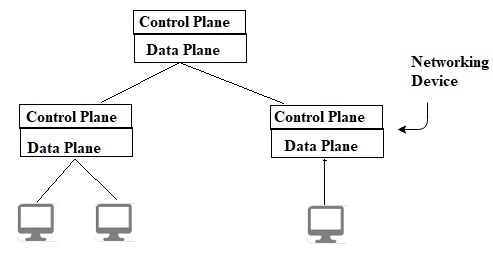SDN: Introduction, Working, Architecture
1. SDN Introduction
The conventional networking paradigm consists of end devices, switches, and routers. The end devices connected in the network communicate with each other through packet transmission. The task of transmitting packets to respective destination hosts is primarily performed by the routers and switches. The routers and switches are termed as networking devices. A networking device consists of two components: a data plane for forwarding packets and a control plane for routing packets. The control plane performs a more intensive task when compared with the data plane because it has to maintain and manage routing tables, routing algorithms, etc. This is why the control plane can be considered as the brain of a networking device.

With the expansion of the network, the number of networking devices also increases which directly renders an impact on the performance of the network. The degradation in performance is caused by the burden of managing routing information at every networking device. The innovation of software-defined networking aims to solve this degradation problem which often arises in large networks. Since traditional routing devices facing a lot of challenges, SDN overcome it by separating the control plane and data plane. SDN assigns the control plane to an external device called controller, which manages all the routing decisions. Here routers do not have to do computationally expensive tasks. All protocols execute in the central controller that takes all the routing decisions. The controller always monitors the global view of the whole network, which can possibly through some well-defined APIs.





